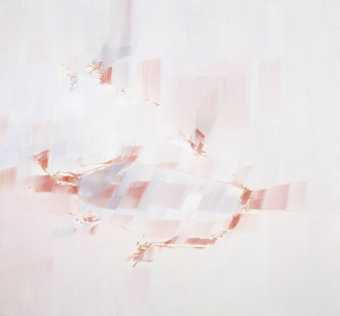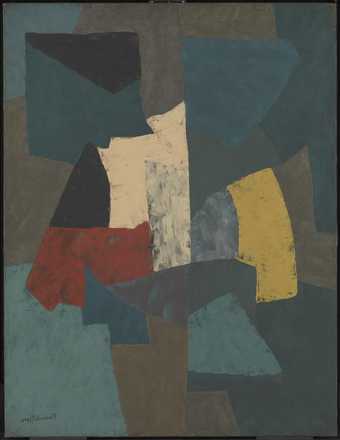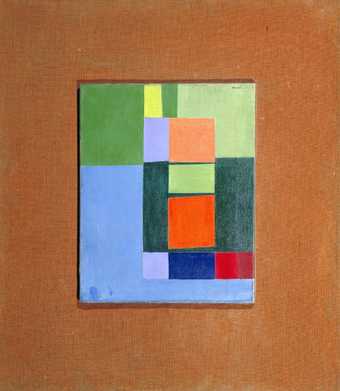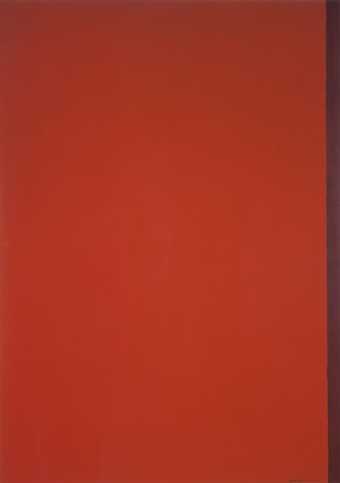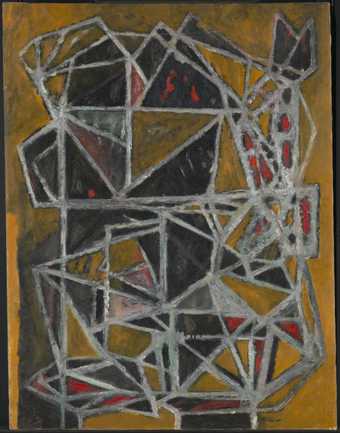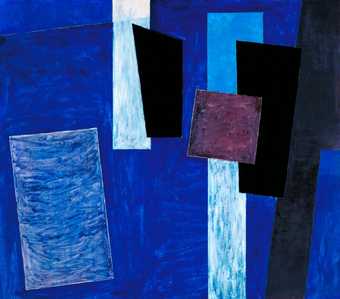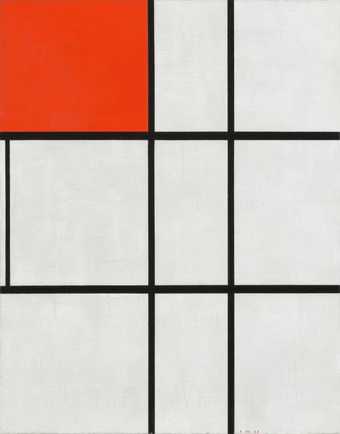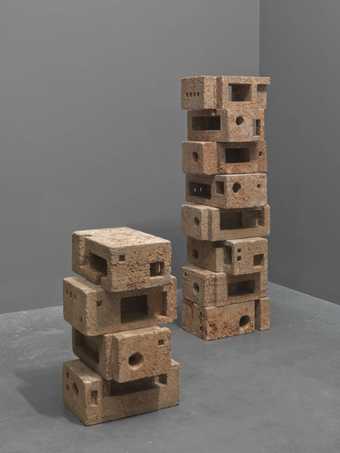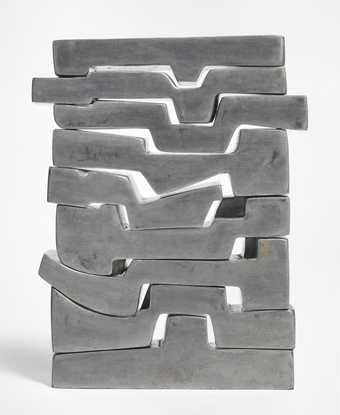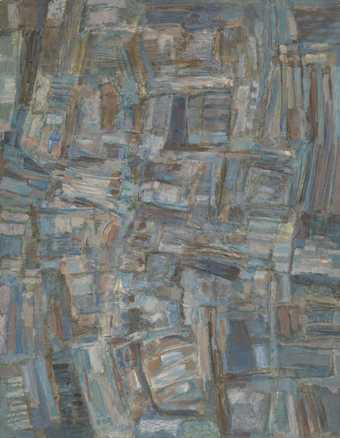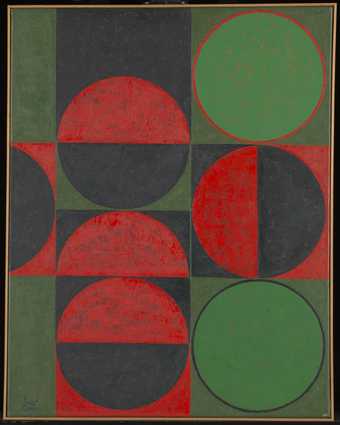
Not on display
- Artist
- Saloua Raouda Choucair 1916–2017
- Medium
- Oil paint on canvas
- Dimensions
- Support: 595 × 800 mm
frame: 761 × 966 mm - Collection
- Tate
- Acquisition
- Purchased with funds provided by the Middle East North Africa Acquisitions Committee 2011
- Reference
- T13308
Summary
Composition in Blue Module is an abstract painting of interlocking forms with straight and curved edges in a range of predominantly blue tones. Larger areas of darker colour at the top of the composition suggest a background, while a large blue triangular shape occupies the foreground. The work reflects the artist’s experience as a student at the École des Beaux-Arts in Paris in the late 1940s and early 1950s, and in particular the influence of Fernand Léger (1881–1955), whose studio she attended. The palette of blues, purples and lighter tones is typical of Choucair’s paintings from this time, which are characterised by subtle shifts within an overall tonal similarity.
Choucair received some critical attention while based in Paris (she had a solo exhibition at Colette Allendy Gallery in 1951), though her work was received less favourably in Beirut where its avant-garde nature was still shocking in a relatively traditional art context. A contemporary Lebanese critic stated in an interview: ‘In looking at your paintings I can barely distinguish the value of one from the other’ (Edvick Shayub, in Sawt al-Mara, vol.7, no.12, 1951). During her time in Paris, Choucair made a number of paintings in this abstract style, as well as a series of watercolours and tapestries that utilise the same geometric interlocking forms. On her return to Beirut in 1951, she began to make sculptures using similar interlocking shapes (see The Screw 1975–7, Tate T13280; Infinite Structure 1963–5, Tate T13262; Poem Wall 1963–5, Tate T13279; and Poem 1963–5, Tate T13278).
Choucair began painting under the tutelage of leading Lebanese landscape artists Mustafa Farroukh and Omar Onsi. She studied at the American University in Beirut before going to Paris in 1948. Her appreciation of western abstraction was coloured by her study of Islamic aesthetics and her modular sculpture and abstract paintings are characterised by a combination of the curve and the straight line, two basic elements of Islamic design.
Further reading
Joseph Tarrab, Hala Schoukair, Helen Kahl, Saloua Raouda Choucair: Her Life and Work, Beirut 2002.
Jessica Morgan
August 2010
Does this text contain inaccurate information or language that you feel we should improve or change? We would like to hear from you.
Display caption
Choucair was one of the few Lebanese artists of her generation devoted to geometric abstraction. Composition in Blue Module dates from the late 1940s and early 1950s, when she was studying in Paris. The blues, purple and lighter tones show the subtle shifts of colour that characterised her early painting. Like many of her paintings, it uses the two basic elements of Islamic design – the straight line and the curve – as a starting point to create simple shapes which she duplicates in various combinations and divisions.
Gallery label, July 2019
Does this text contain inaccurate information or language that you feel we should improve or change? We would like to hear from you.
Explore
- abstraction(8,615)
-
- non-representational(6,161)
- named individuals(12,887)
- religions(181)
- lifestyle and culture(10,247)
-
- cultural identity(7,943)
- design(24)
You might like
-
Sergio Romiti Composition
1960 -
Serge Poliakoff Abstract Composition
1954 -
Piet Mondrian Composition with Yellow, Blue and Red
1937–42 -
William Scott Orange, Black and White Composition
1953 -
Kenneth Martin Composition
1949 -
Barnett Newman Eve
1950 -
William Gear Composition
1949 -
Adrian Heath Composition, Blue, Black and Brown
1952 -
Piet Mondrian Composition B (No.II) with Red
1935 -
Judith Rothschild Untitled Composition
1945 -
Saloua Raouda Choucair Infinite Structure
1963–5 -
Saloua Raouda Choucair Poem of Nine Verses
1966–8 -
Shafic Abboud Composition
c.1957–8 -
Saloua Raouda Choucair Composition with Two Ovals
1951 -
Anwar Jalal Shemza Composition in Red and Green, Squares and Circles
1963

